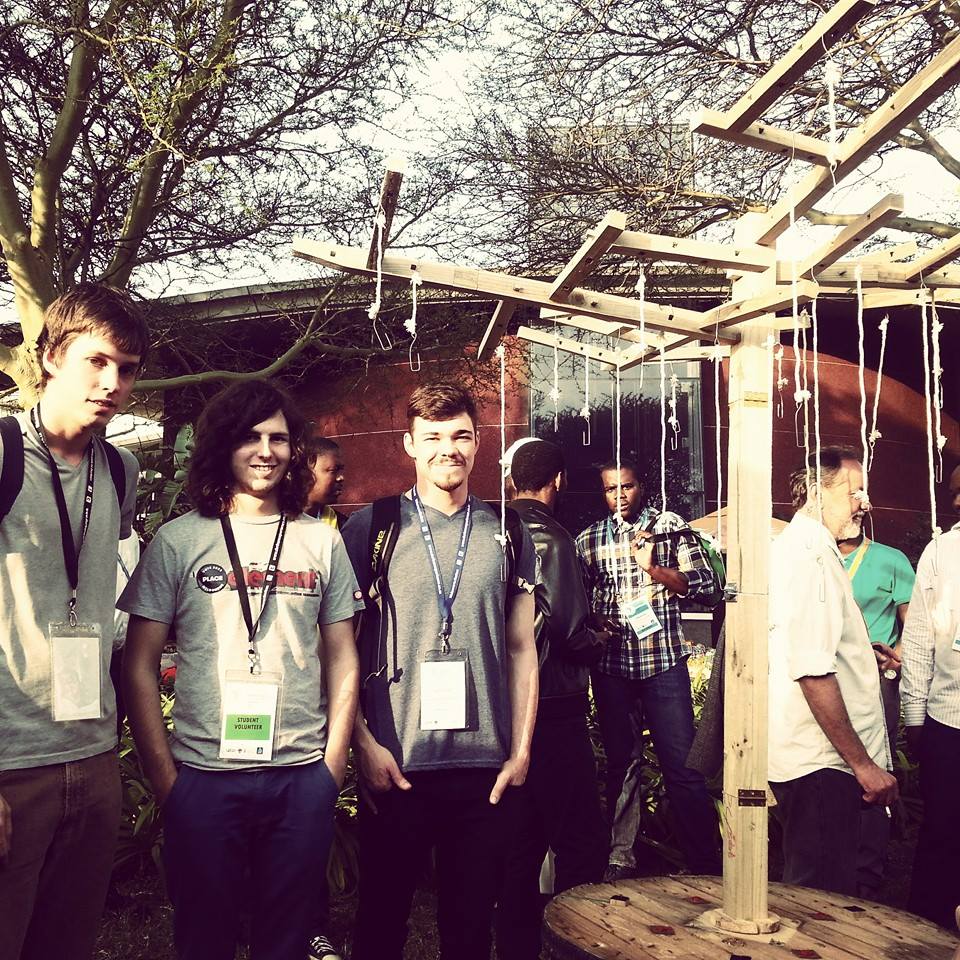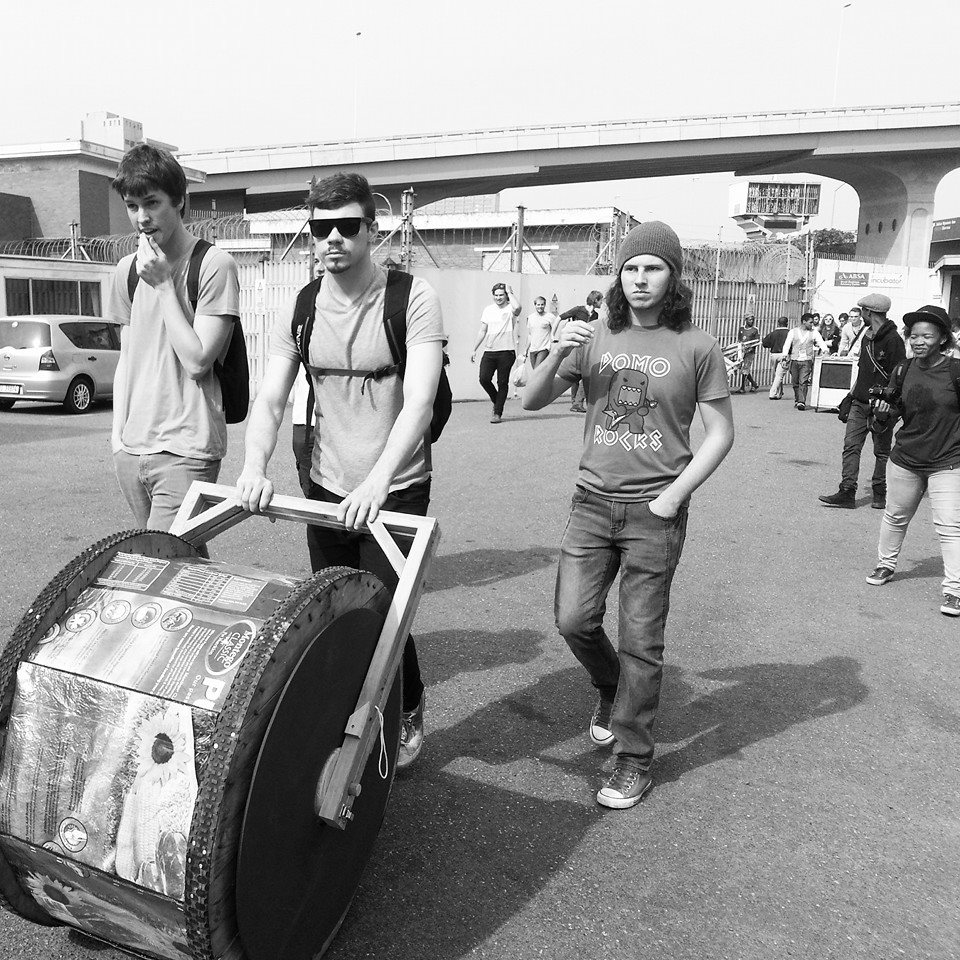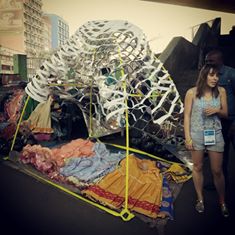by: stroskolanski
The annual Murray & Roberts Des Baker Student Competition took place this year concurrently with the UIA Durban 2014 Congress. In keeping with the Congress theme of ”Architecture Otherwhere,” which explored other ways of knowing and doing, the theme of this year’s Des Baker Competition comprised three components of PLAY + PURPOSE.
Competition Theme
The notion of PLAY alludes to the idea of engagement as the process of interaction between people and products with reference to the passing of time and the experience of place. The idea of PURPOSE is concerned with adding economic, social, and environmental value to a particular place, which emphasises a holistic view of sustainability. Lastly, the ”+” speaks to the all-important conversation that is embedded in the in-between of play and purpose, which is of vital significance in the process of well-considered architecture.
Design Considerations
Equipped with these themes, the students were asked to first identify a trader in their city who required an architectural intervention to better their workplace. While taking into account the socio-economic context in which their identified trader was located, they were then asked to design a mobile, fold-away trade table which would accommodate the trader’s wares. In their project termed ”Gallery of Traditional Medicine,” the team representing the University of Pretoria (UP) aimed at exploring trade as a process of social interaction rather than solely a monetary exchange. Through the lens of traditional medicine, they explored the link between physical objects and metaphysical mechanisms. The brief encouraged the innovative and adaptive re-use of materials in the design and construction of the trade tables be considered, where the overall aim of the project was to suggest alternative solutions to the workplace of informal traders.
Project Process
This project was sited in Warwick, a historic and bustling community in Durban’s city center. The process of pairing local traders with the students’ trade table designs was coordinated by Richard Dobson and Patrick Ndlovu, founders of Asiye eTafuleni (AeT), a local non-profit organization that collaborates with informal workers and associated professionals to develop inclusive urban spaces that support sustainable livelihoods for informal workers.
On day one of the project, the students were briefed by Dobson and Ndlovu at the AeT premises in Warwick about the process and procedure of what proved to be a somewhat logistically challenging working project based in Warwick. This was followed by the students transporting their trade tables – some with the help of wheelbarrow pushers – into the bustling heart of Warwick where they were paired with a trader. A unique learning experience ensued where architecture students became traders and traders became architecture critics. When asked what the students most enjoyed about this experience, the University of Johannesburg (UJ) team replied by saying: “The experience was very stimulating from every aspect of the site; a sensory overload! Under the apparent chaos within the Warwick there is a definite framework and clear understanding of the space and how it is used on an everyday basis by both traders and customers.” While ideas where exchanged between the students and their allocated trader, passersby and onlookers gazed on inquisitively. Trading off the students’ trade tables by the traders took place over two days of the UIA Congress, in what was essentially a working research project in Warwick.
Adjudication Process
On day two, a panel of judges coordinated by Tseliso Moahloli, a lecturer of architecture at the Durban Institute of Technology, assembled in Warwick for the adjudication process. The panel, comprising Cameron Sinclair, co-founder of Architecture for Humanity; Hoosen Moolla, project manager at iTrump (Inner City Thekwini Regeneration and Urban Management Programme); and two trader representatives from Warwick, Fikisile Dlamini, a local carpenter, and Sipho Mkhwanazi, a committee member at the Brook Street Market, were briefed on the individual projects by each of the participating student groups before moving into Warwick to assess the table designs. The adjudication of the students’ designs was heavily weighted on the trader-student interaction as a process-driven initiative. As Sinclair aptly expressed, “An architectural intervention is successful when the lines between client and architect are blurred and when it becomes difficult to distinguish architects from the community they serve.”
Award Ceremony
On day three of the UIA Congress, the students’ trade tables were transported to the Walnut Road Networking Lounge at the International Convention Center, bringing the Warwick project to the Congress delegates. The interest and attention of delegates passing through the lounge peaked as the students began to set up their trade tables inside the venue. The success of the award ceremony can also be attributed to guest speaker Cameron Sinclair, who contextualized the Des Baker Competition with that of the importance of the informal economy on a world scale. Photographs taken by the talented Durban Centre for Photography (DCP) students, Simanga Zondo and Sandy Nzungane revealed exquisitely the macro context of the students’ trade tables in Warwick juxtaposed to that of their intricate technical details. These were projected on a screen for the duration of the award ceremony.
As part of UIA Durban 2014, the Des Baker Student Competition brought about an opportunity for a dynamic exchange of ideas on a pragmatic level through trader-designer interaction. This unique project, which enabled students a rare and intimate glimpse into the lives of those who are seen to live on the fringe of society, was a success on all levels and certainly a catalyst to which similar projects on a world scale may be persued.
For more information on the informal economy in Warwick visit: http://aet.org.za/
Sophie Troskolanski is the Des Baker Event Coordinator and Fundraising Programme Coordinator. She is pursuing a Master of Architecture at the University of KwaZulu-Natal – UKZN.












